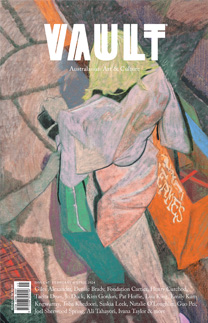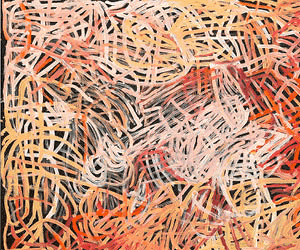Robert MacPherson
Norm Breacher Opts
The oeuvre of Robert MacPherson can be read as an at once complex riddle and an almost impossibly candid gesture.
Robert MacPherson has been thinking about and making art for nearly six decades. The story goes that he decided to become an artist in 1955 at age 18, teaching himself through art history books and self-devised exercises while working away in various jobs. He spent time as a painter and docker, a supervisor of cleaners and, later on, as an antiques dealer. It was a slow burn: his first exhibition was some 15 years later, in 1973, at the age of 36.
This Brisbane artist, who worked a string of menial jobs, also went on to become a key figure in the community surrounding the Institute of Modern Art (IMA) in its formative years, one of Australia’s most important and internationally-focused centres for the exhibition and commissioning of experimental, esoteric and other non-commercial forms of art. MacPherson’s life and art seems to be full of such dualities: working class/intellectual; conceptual/personal; provincial/international.
As the late American critic Clement Greenberg wrote in his 1965 essay “Modernist painting”, the limitations and defining features of a painting were “the flat surface, the shape of the support, the properties of the pigment”. In other words, a painting is the sum of a few basic parts configured in myriad ways. MacPherson’s process and outcome revolve around ‘inherency’, a term perhaps best defined by Rex Butler in Contemporary Visual Arts + Culture Broadsheet as “the idea that the finished work simply expresses in visual form the inherent property of the material used in making it”. The parts are rearranged, but the message remains the same. Along these lines, it could be argued ... Subscribe to read this article in full

























